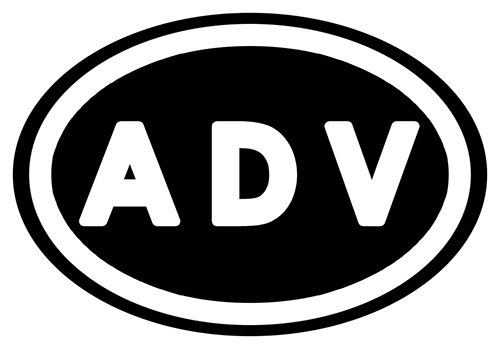ADVICE AND INFORMATION
Whilst we don't claim to have visited absolutely every inch of Australia, we've seen more than our fair share. We've ridden the highways, rattled along the tracks, powered through the deserts, ranged up the mountains, slipped through the valleys and roamed deep into the Outback.
The information provided here is intended to give you some knowledge to help you stay safe in country, a bit of background to main states and we've also aimed to explain some of the more potentially confusing aspects of hiring a bike in Australia.
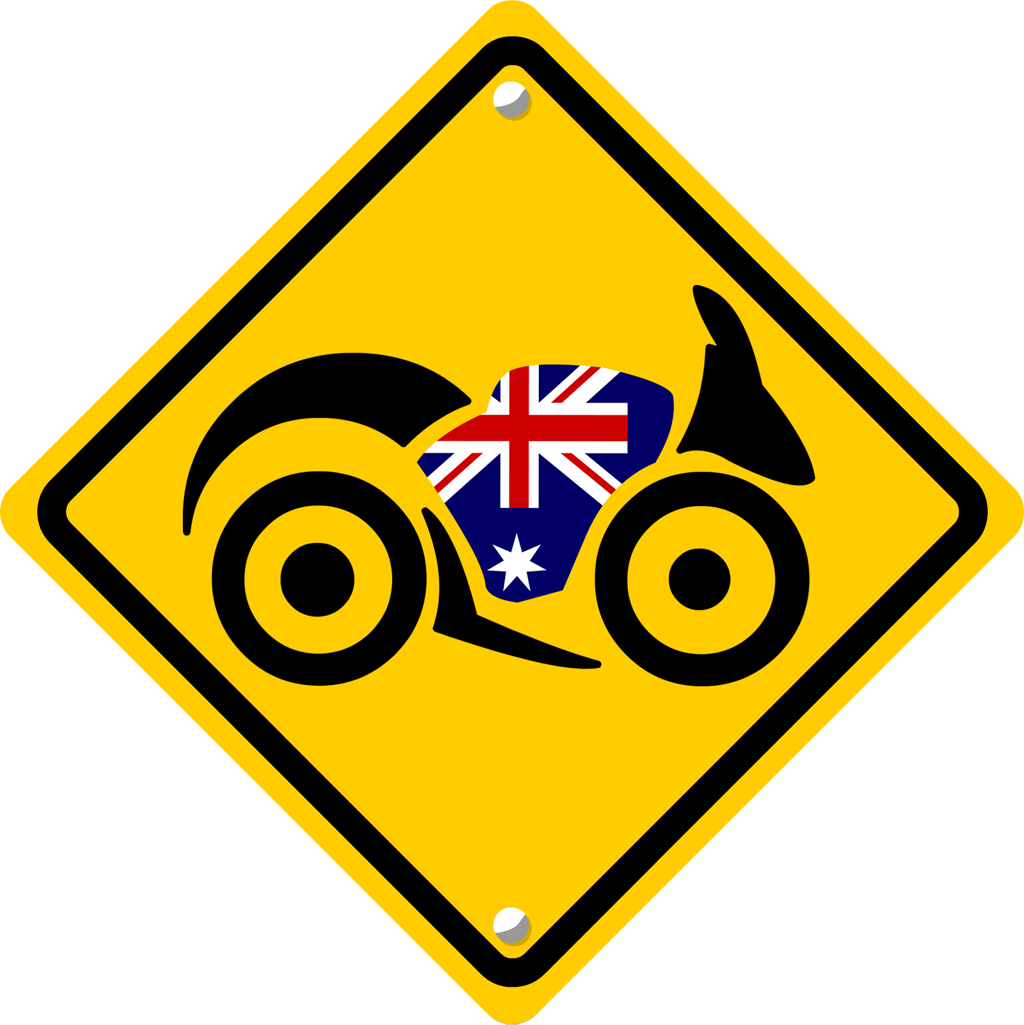
MORE ADVICE AND INFORMATION
-
GENERAL ADVICE
-
BIKE SETUP
-
DOCUMENTS
-
INSURANCE
-
SECURITY BOND & EXCESS EXPLAINED
-
GPS, SAT-NAV AND DIGITAL MAPS
-
SELF-GUIDED TOUR NAVIGATION
-
LUGGAGE TRANSPORT
-
BREAKDOWNS & SERVICE PLEDGE
-
CANCELLATION POLICY EXPLAINED
-
OTHER FEES, TOLLS, FINES ETC.
-
BOOKING TERMS & CONDITIONS
STATE GUIDES
-
STATE GUIDE:
NEW SOUTH WALES
-
STATE GUIDE:
VICTORIA
-
STATE GUIDE:
QUEENSLAND
-
STATE GUIDE:
WESTERN AUSTRALIA
-
STATE GUIDE:
SOUTH AUSTRALIA
-
STATE GUIDE:
TASMANIA
-
STATE GUIDE:
NORTHERN TERRITORY
STATE GUIDE: NORTHERN TERRITORY
Darwin is a modern, cosmopolitan city on the north coast and just happens to be a lot closer to Asia, than to any other Australian cities. It’s pretty remote up in the NT! It’s a centre for backpackers and other adventurous tourists with plenty of hopping night-life, friendly hostels and a wide range of other attractions to keep you entertained. A good shopping centre, fascinating crocodile farms, a pretty impressive aquarium, a wide range of fishing trips and the nearby Litchfield and Kakadu National Parks, to name but a few.
Bear in mind it can be very hot and extremely humid with temperatures of well over 40°C in the wet season. It doesn’t get much cooler at night either, so it’s best to slow your pace of life down considerably and drink plenty. This isn’t the state to be rushing around in. You’ll probably acclimatise after a week or so, especially if you try and stay out of the air conditioning as much as possible. I was advised to eat plenty of curry and chilli as it apparently helps to thin the blood. I don’t know if it works or not, but any excuse for a curry is good enough for me!


Beware of the mosquitoes and sand flies. The latter are the smallest flies you’ve ever seen, with one of the biggest appetites and most itchy legacy after they’ve taken a nibble on your extremities. A good insect repellent will sort them out for the most part, but don’t fall asleep on your balcony at night after a few too many beers in one of Darwin’s many bars. You’ll be eaten alive – I speak from experience!
The national parks are the reason most people visit the Northern Territory and there are endless tours and trips on offer. Advantages of taking a tour are that you’ll meet plenty of other travellers with interesting tales to tell, plus you’ll usually get an expert’s insight into the area. On the other hand you obviously pay for the luxury, so if you’re prepared to do a bit of reading, then much of the information can be gleaned from books and the excellent information centres. A cheeky tip when visiting key attractions is to follow a group round and listen to the guide. Try not to make it too obvious though!
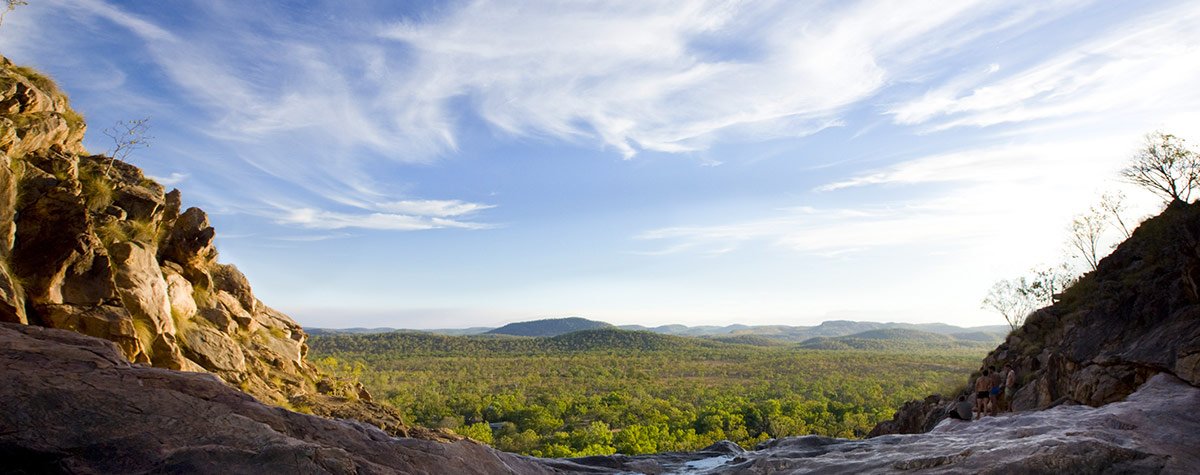
Litchfield National Park is only 140km south of Darwin and isn’t as commercialised as it’s nearby neighbour Kakadu. The magnetic termite mounds are worth a look and there are some brilliant waterfalls and plunge pools to take a dip in. The waterfalls are the real attraction though and they’re absolute heaven after a hard days riding in the dry season. Be mindful of when you’re in the area though. Swimming in the dry season is generally OK, but in the wet season it’s best to stay on dry land thanks to the numerous salt water crocodiles. Best advice, check with a local or and official before taking a dip!

The world famous Kakadu on the other hand, is definitely not a place for practicing your synchronised swimming moves! Don’t take chances here. There are signs everywhere telling you not to swim in the lakes and rivers, or even camp too close to the numerous billabongs. Stick to the path well worn and keep your eyes open. Kakadu is an alluring, natural wilderness but that means there are plenty of inherent dangers too!

Don’t let all this put you off though. Kakadu is stunningly beautiful and a haven for wildlife. It’s full of swampy rivers, large rocky outcrops overlooking vast wetlands, steep waterfalls and dark plunge pools. It’s a nature lover’s paradise and an early morning boat trip on Yellow Water Billabong just as the mist is rising is an unforgettable experience, one which I speak from.
The quantity of life and astonishing range of species is incredible. Saltwater and freshwater crocodiles, eagles, water buffalo, snakes, cranes, kingfishers, waterfowl, pelicans, giant water lilies, paperbark trees, this list could go on forever. There are normally plenty of helpful rangers around ensure you don’t miss out on anything.
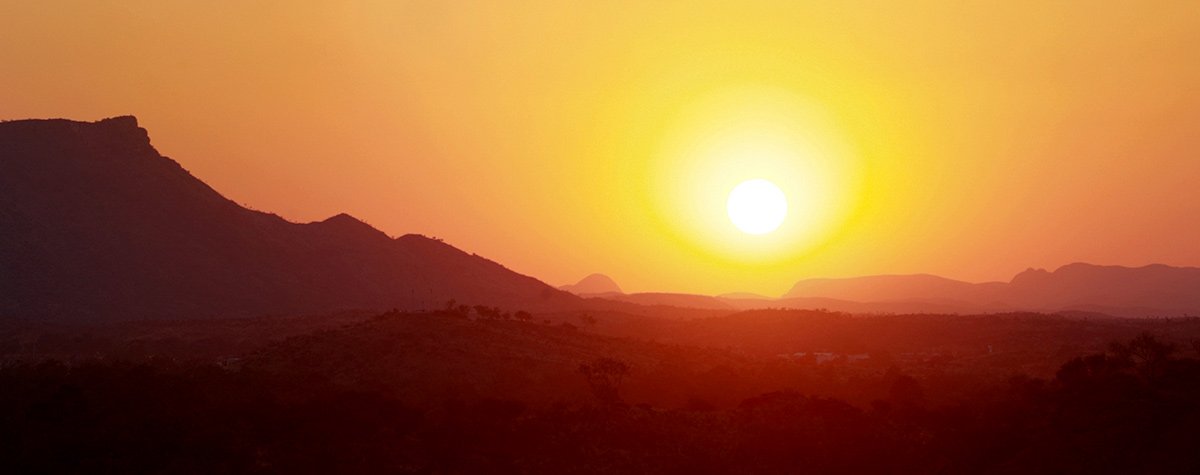
Kakadu is steeped in aboriginal history and it’s worth taking some time out to learn more about their culture. It helps the land come alive and brings meaning to much of the aboriginal talk you’ll hear on your travels around Australia. The beautiful scenery helps you understand why aboriginal people love this country and watching the sun go down over the wetlands whilst sitting on the cliff top at Ubirr, is the closest I’ve come to a spiritual experience for many years.
Riding south from Kakadu you’ll travel along the Stuart Highway which runs right through to South Australia via Alice Springs. There are some interesting stops that make a detour or tour worthwhile as you head south. Edith Falls is a series of waterfalls ending in a large pool close to a good quality campsite. An early morning walk upstream rewards you with a real feeling of being in the outback proper. After three or four miles of walking, a swim in one of the pools is very welcome before you head back to camp. Take plenty of water whenever you go walking even if it’s cool when you set off.

Katherine Gorge is actually a series of 13 steep gorges cut through the bedrock by the Katherine River. There’s a good information centre, campsite, restaurant and the best way to see the gorges without a doubt, is from a hire canoe. Gently paddle up and then down stream and if you get too hot and thirsty just jump in – the water’s so clean you can drink it while you’re in there! The freshwater crocodile marks in the sandy banks were a bit disconcerting when I was there, but rangers assured me I’d be safe.
Further south the famous Daly Waters outback pub is definitely worth a visit. It loses its charm a bit if a bus load of tourists turn up but the vast array of underwear, driving licenses, passports and other memorabilia pinned to the walls is an indication of how the evening’s drinking sessions can turn out. Don’t plan on an early start if you decide to stay a night!

Continuing on south from Daly Waters you’ll pass Tennant Creek and the Devil’s Marbles on the way to the MacDonnell Ranges, Alice Springs and Uluru (Ayers Rock). I’ve never quite got that far though and am planning a north south trip for my next motorbike journey. Instead I’ve always turned off at Daly Waters and headed for Borroloola close to the Gulf of Carpentaria. Borroloola is nothing to write home about (although the pub does a great roast on a Sunday) but it marks the start of the unsurfaced Carpentaria Highway heading towards Queensland.
The Gulf Road is about 780 kilometres of rough road with the odd roadhouse dotted along its length to ensure you don’t run out of fuel. There are short sections of black top at Burketown but that finishes shortly afterwards on the way to Normanton. The road conditions vary from long stretches of deep corrugations, to smooth gravel surface and the occasional patch of sand. Beware of the bull dust which collects in large holes along the route and I’d recommend against travelling the road in the wet season, as there are several river crossings along the way. You won’t even notice them as you cross in the dry season, but come the wet and it’s a different matter entirely!
It’s worth letting the police know your itinerary before you leave Borroloola and always phone them when you reach your destination safely. That bit of advice applies to most remote areas of Australia too. The road passes through typical red soiled bush lands and you can make short trips off to the coast to try a bit of barramundi fishing if you fancy it.
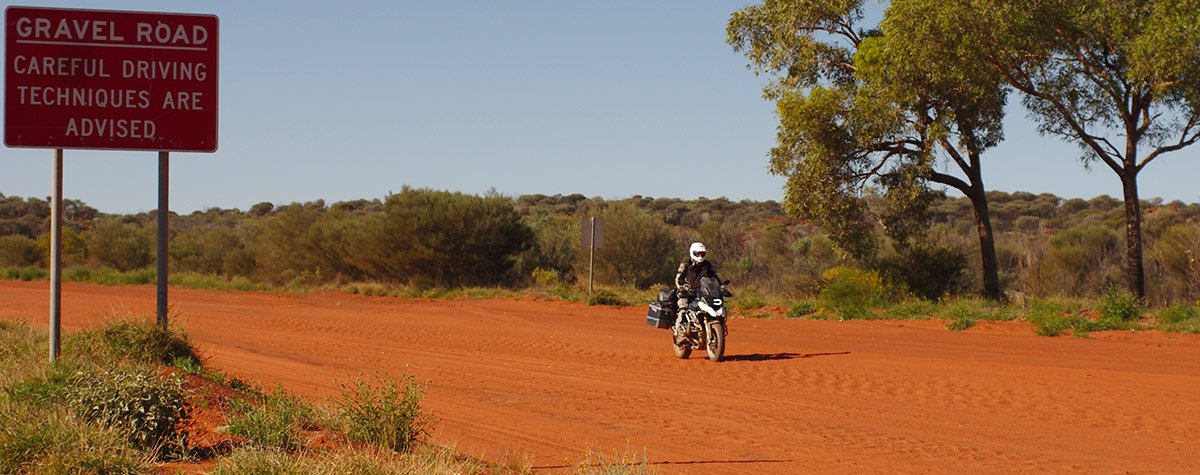
Although Burketown is technically in Queensland I’ll cover it here as it’s on the highway. It has some interesting history due to the adventures of Burke and Wills and if you travel late in the year (October-November) there’s a chance of seeing the Morning Glory cloud formation roll in from the Gulf of Carpentaria.
This is a long ‘tube’ of dense cloud which rolls dramatically overhead preceded by a rush of wind, usually first thing in the morning and it can only be seen in one or two places in the world.
There’s also a good chance you’ll see cattle being herded with helicopters. It’s amazing to watch them flying just a few feet off the ground as they usher the cows on their way.
The road turns to gravel again between Burketown and Normanton and at the end of 800km of rough track riding, the sense of achievement I had at reaching the end of the road was incredible. I was so relieved to get back onto tarmac that I dropped to my knees and literally kissed it – only to burn my lips! I can’t describe the deep sense of elation I felt especially considering this journey was the first I’d ever ridden off road for any distance and I’d made the trip alone. I’m sure it’s not a patch on walking unaided to the South Pole or something but I certainly felt like it was that scale of achievement!
From Normanton there’s a few hundred kilometres to the east coast and the Great Barrier Reef!
I hope you’ve found my personal account of riding in the Northern Territory useful and a perhaps even a little bit interesting!



